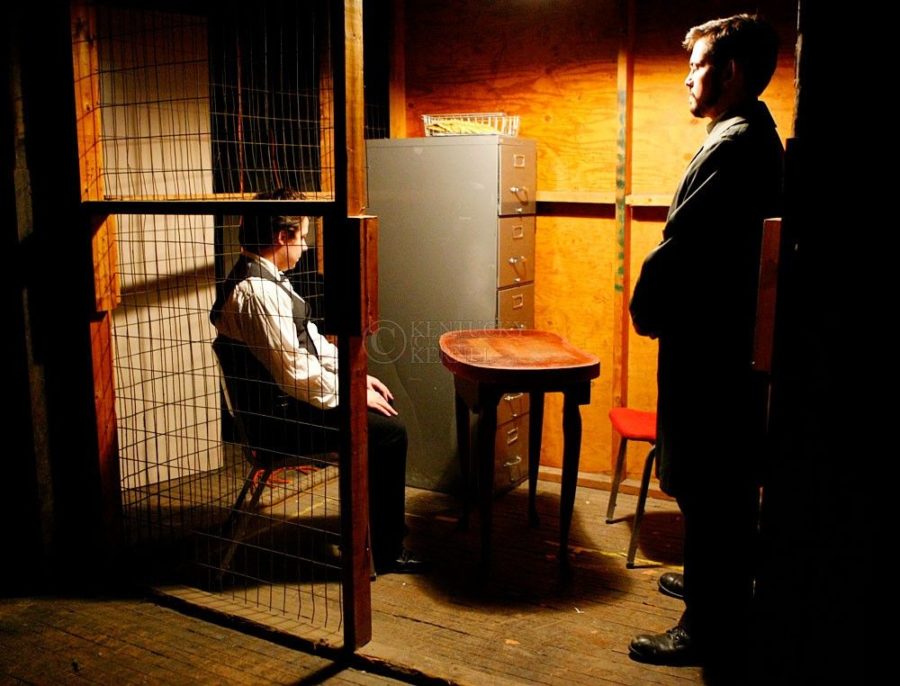Audience gets involved in Bulgakov play
April 22, 2013
By Tessa Lighty | @KyKernel
While walking between scenes, interacting with the cast of the play and paying attention to the complicated yet interesting plot of “Bulgakov’s Dreams: A Historical Drama,” the audience hardly realizes they’ve been tricked into a history lesson.
The play featured the life of Russian playwright Mikhail Bulgakov and his struggle against Soviet Russia as authorities tried to limit his creativity and censor his plays.
Through a series of flashbacks and clips of the plays Bulgakov was creating, the audience gets a historical picture of Bulgakov’s life as a playwright.
The Department of Theatre, along with the Russian Studies Program and the Department of History, created the play about how creativity cannot be limited for the truly creative.
With the rattling train tracks nearby and abandoned feel of the Reynolds Building, the audience could easily imagine they were in Soviet Russia and could follow the maze that is the mind of Bulgakov, who was played by Patrick Camp.
“As soon as I came in here (the Reynolds Building) I knew what I wanted to be in here,” said Director Herman Daniel Farrell III.
The Reynolds Building warehouse’s labyrinth of materials mimic the mind of Bulgakov.
As the audience travels through the warehouse, they venture through Bulgakov’s thoughts and struggles as the government tries to limit the amount of creativity he has with his plays.
“It is a different style than I have ever seen,” said finance freshman Andrew Thompson, who is enrolled in a theater class.
This play was not one to fall asleep watching.
Beside the audience needing to move to a different part of the set about every 10 minutes, the plot sometimes became complicated as scenes switched between reality, flashbacks and scenes from other Bulgakov plays.
“It took a little while for me to catch on but I got that they (the government) were trying to control him (Bulgakov) and stunted his creativity,” linguistics junior Daisha Braswell said.
At the end of the play, the audience sees that “a dog will always be a dog” and someone who is creative cannot shut off that part of them because they are told to.






























































































































































